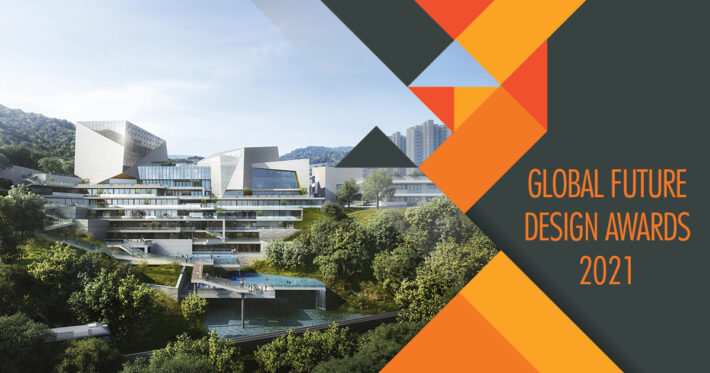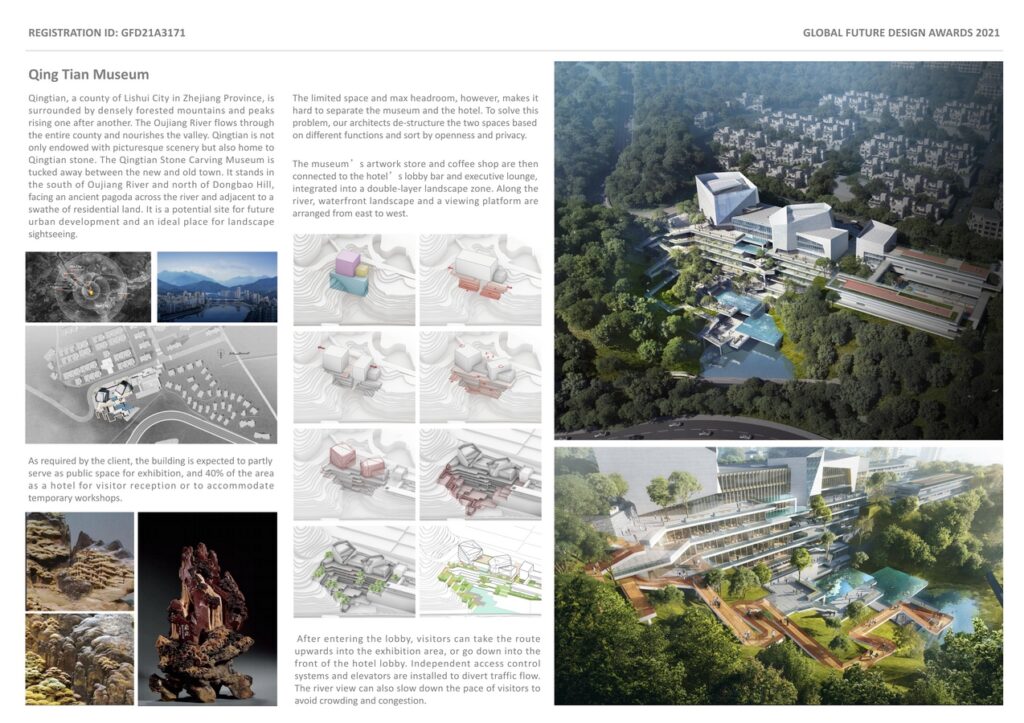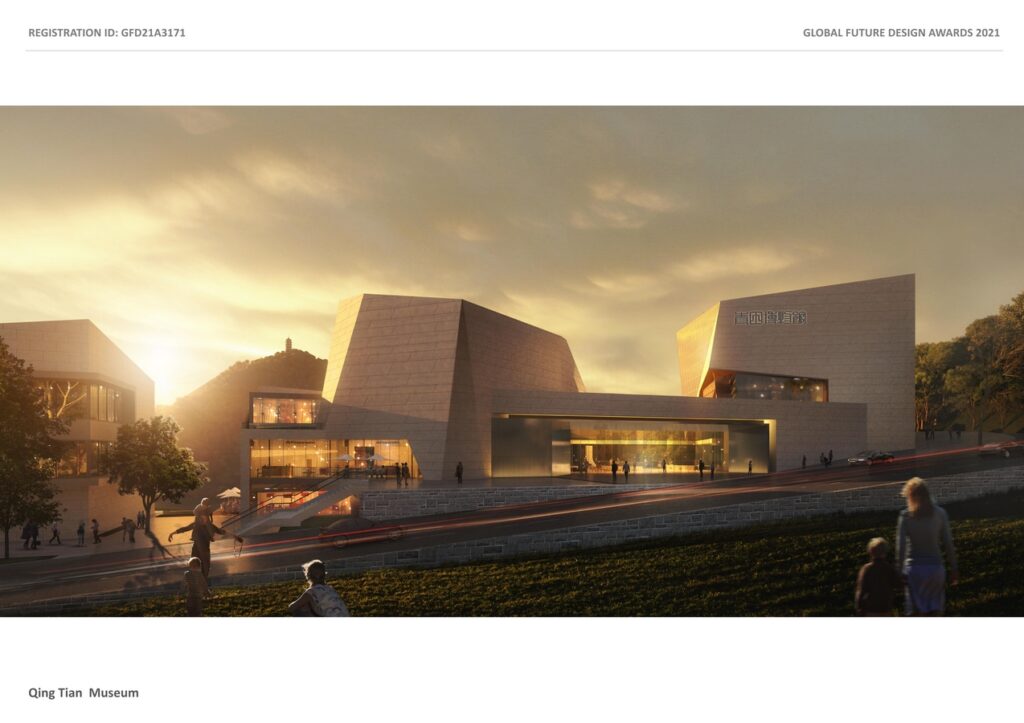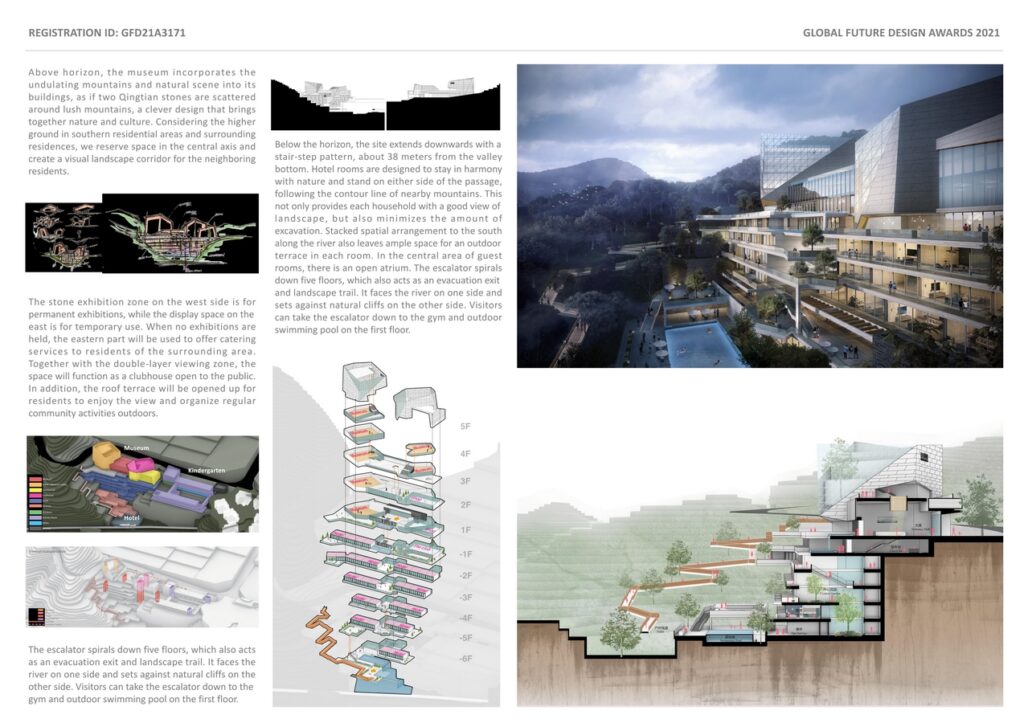Qingtian, a county of Lishui City in Zhejiang Province, is surrounded by densely forested mountains and peaks rising one after another. The Oujiang River flows through the entire county and nourishes the valley. Qingtian is not only endowed with picturesque scenery but also home to Qingtian stone. The Qingtian Stone Carving Museum is tucked away between the new and old town. It stands in the south of Oujiang River and north of Dongbao Hill, facing an ancient pagoda across the river and adjacent to a swathe of residential land. It is a potential site for future urban development and an ideal place for landscape sightseeing. As required by the client, the building is expected to partly serve as public space for exhibition, and 40% of the area as a hotel for visitor reception or to accommodate temporary workshops.
Global Future Design Awards 2022: Discounted Entries Open Now! Save $50
Super Early Discount – 20th October 2021 to 30th December 2021 – $199 = $149
🏆 Winner
Global Future Design Awards 2021
Qintian Museum
Cultural Architecture Concept
Firm
DO Design Group
Architect/Designer
DO Design Group
Design Team
Sun Shuli, Wang Bin, Zhang Chi, Wu Yuan, Qiu Mingyu, Zhang Zhe
Location
Lishui City, Zhejiang Province
Country
China
Photographer/Copyright
©DO Design Group
The limited space and max headroom, however, makes it hard to separate the museum and the hotel. To solve this problem, our architects de-structure the two spaces based on different functions and sort by openness and privacy. The museum’s artwork store and coffee shop are then connected to the hotel’s lobby bar and executive lounge, integrated into a double-layer landscape zone. Along the river, waterfront landscape and a viewing platform are arranged from east to west. After entering the lobby, visitors can take the route upwards into the exhibition area, or go down into the front of the hotel lobby. Independent access control systems and elevators are installed to divert traffic flow. The river view can also slow down the pace of visitors to avoid crowding and congestion.
Above horizon, the museum incorporates the undulating mountains and natural scene into its buildings, as if two Qingtian stones are scattered around lush mountains, a clever design that brings together nature and culture. Considering the higher ground in southern residential areas and surrounding residences, we reserve space in the central axis and create a visual landscape corridor for the neighboring residents.
The stone exhibition zone on the west side is for permanent exhibitions, while the display space on the east is for temporary use. When no exhibitions are held, the eastern part will be used to offer catering services to residents of the surrounding area. Together with the double-layer viewing zone, the space will function as a clubhouse open to the public. In addition, the roof terrace will be opened up for residents to enjoy the view and organize regular community activities outdoors.
Below the horizon, the site extends downwards with a stair-step pattern, about 38 meters from the valley bottom. Hotel rooms are designed to stay in harmony with nature and stand on either side of the passage, following the contour line of nearby mountains. This not only provides each household with a good view of landscape, but also minimizes the amount of excavation. Stacked spatial arrangement to the south along the river also leaves ample space for an outdoor terrace in each room. In the central area of guest rooms, there is an open atrium. The escalator spirals down five floors, which also acts as an evacuation exit and landscape trail. It faces the river on one side and sets against natural cliffs on the other side. Visitors can take the escalator down to the gym and outdoor swimming pool on the first floor.
Registrations open… Don’t miss the opportunity to win with your visionary projects.







